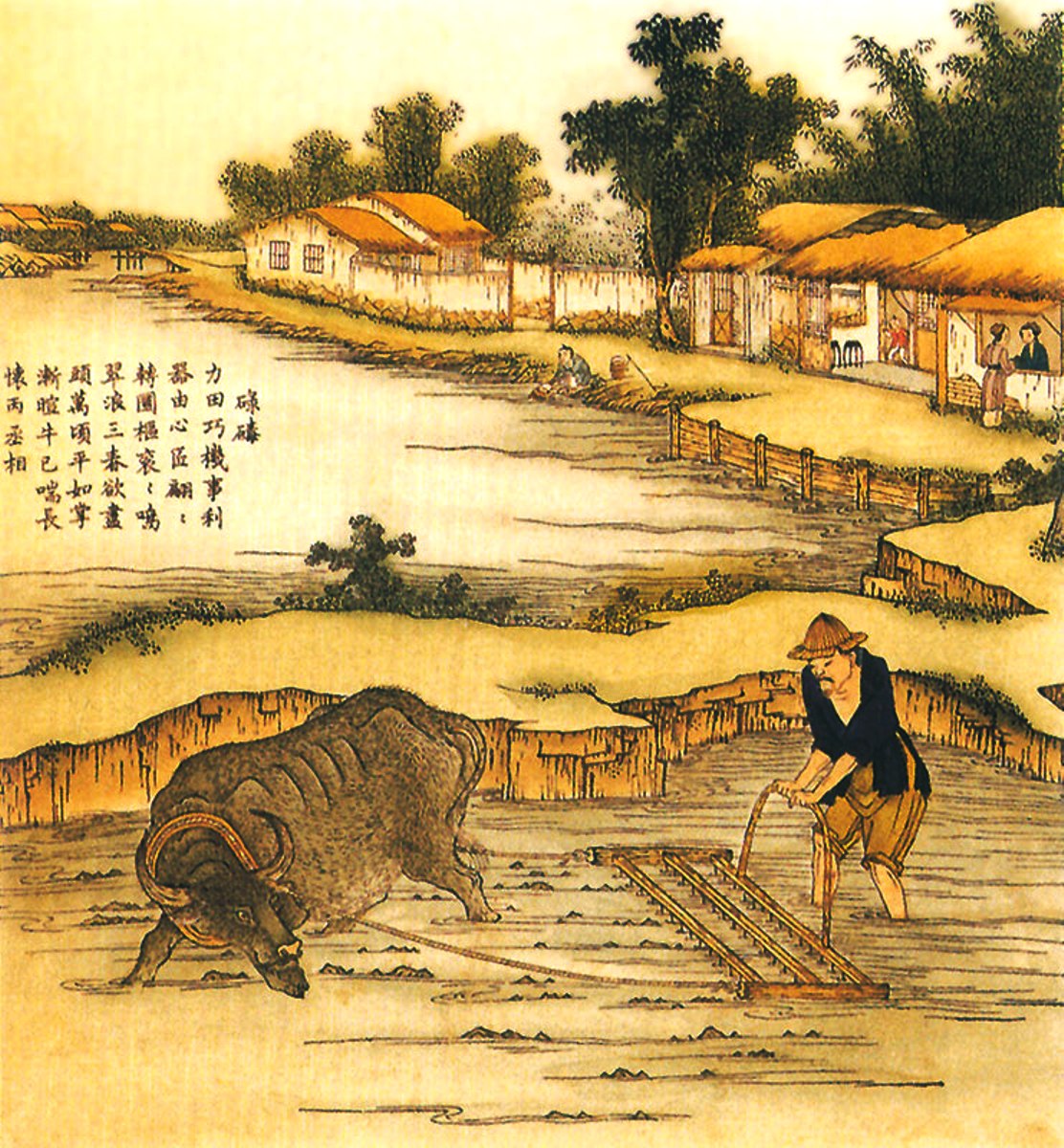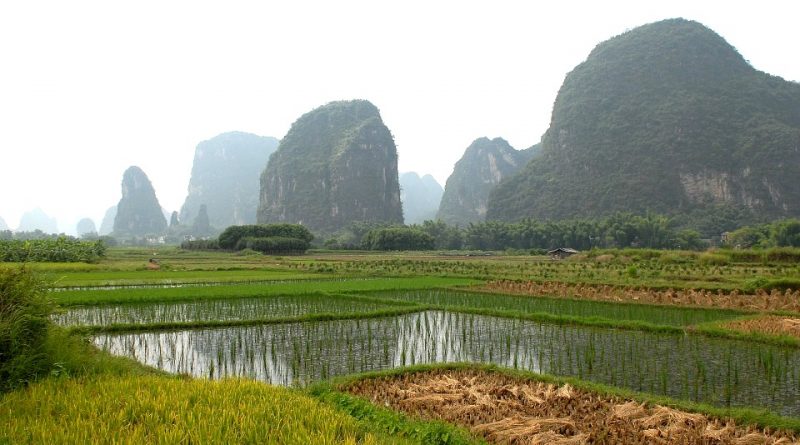Agriculture in ancient China – part XII
Agriculture in ancient China – part XII
The way of thinking of the Yin-yang school was very much in vogue during the earlier Han dynasty, although even in those times those who thought differently were not lacking. In the Tang and Song periods (960-1279) many doctors criticized the excessive rigidity of the cosmological correspondences supported by the Yin-yang and the Five phases schools; these doctors studied new “scientific” models in order to find new correspondence systems that took better account of local conditions and the individual constitution of patients.
Moreover, Jia Sixie also showed some reservations regarding the application of abstract cosmological calculations in the field of agronomic decisions and procedures; in any case, at the end of the text dedicated to each species, he added the recommendations concerning the good and bad days of sowing proposed by the Yin-yang school; Jia also transcribes the critical judgment of Sima Tan (? -110 BC) reported by his son Sima Qian (c. 145-86 BC) in the Memoirs of a Historian (Shiji, 130): “The philosophers of the Yin-yang school are bigots and they have many taboos. We should try to follow the general lines of this theory and not obey all its intricate regulations “(Qimin yaoshu jinshi, 3.14, p. 4).
To these observations Jia adds a proverb: “The best strategy is to follow the season and the soil moisture”. Most of Jia’s personal recommendations on the days or periods for sowing refer to the lunar calendar, with the months divided into ten-day periods, xun: “Generally speaking, for all five cereals, sowing in the first ten days of the month, you will get an excellent harvest; sowing in the ten days in the middle a mediocre harvest will be obtained and sowing in the last ten days a poor harvest will be obtained “(ibidem, p. 1).
This recommendation was grafted onto the belief, widespread in the world and certainly not without foundation, that plant growth was influenced by the lunar cycle. Jia was aware that the lunar calendar did not exactly reflect the passage of the seasons: “in the years in which there is a month interchange the nodal qi fall late and therefore it is advisable to sow later [according to the lunar calendar]” (ibidem, 3.7 , p. 2). It is interesting to note that in many cases Jia relates the solar calendar to the lunar calendar, to provide a more accurate indication, as in the case in which it is recommended to sow the panìco in the first ten days of the third month preceding the nodal qi called qingming (‘clear and bright’). In any case, in general, it is preferable to sow early, because the fields sown before give a more abundant harvest. (The early fields are clean and easy to care for, while the late fields are full of weeds and difficult to work with.) The total volume of the crop depends on the vintage more than from the time it was sown, but the grain sown before will have thin chaff and full and abundant grains, while the one sown late will have a thicker skin and fewer grains, many of which are empty. (ibidem, 3.6, p. 1).
The final choice, however, will always be dictated by the weather conditions: it is always good to sow the wheat after the rain. After a light rain, sow your field immediately, before it dries; but if the rain has been abundant, then wait for the seeds to sprout to sow. (If the rain has been scarce and it expects too much to sow, the roots will not have sufficient humidity to sprout, but if the soil is not given time to dry [literally, to return pale] after an abundant rain, then the contained humidity in the soil it will make the plant roots sick). (Ibid).

Thus throughout the imperial period the peasants continued to observe the auspicious and inauspicious days for the sowing of the crops, indicated, together with favorable or unfavorable dates for other important activities, in the almanac published each year by the Office of the imperial calendar.
It should be noted that even though divination and emerology never lost the prestige they enjoyed in the eyes of the people, the preference accorded by Jia to terrestrial factors rather than to the heavenly ones was the forerunner for teaching and addresses of the agronomists later, who generally excluded from their calculations all cosmological considerations, even when they kept the form of the monthly ordinances, ie the grouping of agricultural activities by month; so, for example, the Treaty of agriculture of Master Shen (Shenshi nongshu), composed around ca. 1640, is an example of the enduring charm of the form of monthly ordinances. Most agronomists later, following the example of Jia Sixie, advised to stick to some agricultural principles of an empirical nature (“sowing as soon as possible, sowing after rain but not when the soil is still wet”) and signs offered by some natural phenomena (the beginning of spring storms, the flight of hemp pollen). No cosmological justification was provided for these agronomic principles; for Jia Sixie, as for his successors, the passage of the seasons was inexorable, and the “seasons of the sky” had to take precedence over any cosmological manipulation since, once the right moment had passed, there was no way to recover it.
The treatise of Jia Sixie, which was written long before the invention of printing, was diffused for many centuries both in manuscript form and in the form of the first book of agronomy when it was printed and distributed by imperial order, already at the beginning of the XI century.
This text can be considered as the milestone of the eastern agronomy of the following centuries; in fact his writing style and many aspects of the organization of the text became the model to which all subsequent agronomic treatises referred, not only in China but also in Korea and Japan.
The agronomists of the later periods, who dealt with agriculture, drew extensively on the treatise of Jia Sixie to describe the techniques and cultivations widespread in the North. Let us mention, for example, Xu Guangqi, an author of the early seventeenth century. who spent many years of his life in the North, near Tianjin, personally conducting a farm and carrying out numerous agronomy experiments, cites in his Complete Treatise on Agricultural Administration the book of Jia Sixie in the section on millet varieties, without adding any source next one. Many of the authors who dealt with northern agriculture complained about the worsening of standards compared to those established by Jia Sixie; in fact, the level of competence and technological knowledge reflected in his treatise was rarely achieved in later periods. Towards the middle of the Tang dynasty the Yangzi valley, where the abundance of water had allowed the intensive cultivation of rice to develop, surpassed the northern plains in agricultural productivity and, later, in political and social importance. Capital and knowledge increasingly took the road to the south, and the northern countryside became a relatively backward territory, where small farmers struggled to survive and large farms did not produce profits.
Guido Bissanti

